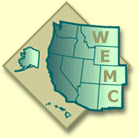 |
Teleauction for Slaughter Lambs
David L. Holder
|
 |
Teleauction for Slaughter Lambs
David L. Holder
|
SITUATION: Throughout the 1960s, sheep producers in Virginia sold their lambs through local livestock auctions where only one buyer bid on the animals. Producers felt they were not getting a fair price for their lambs, and indeed the Virginia price was declining relative to western market prices.
OBJECTIVE: Producers wanted to create a more competitive market and to increase market prices.
STRATEGIES: The problem was discussed at several producers' meetings attended by representatives of the Virginia Tech Cooperative Extension Service, Virginia Department of Agriculture, US Department of Agriculture, and American Sheep Producers Council. The idea for creating a teleauction, an auction among packers and other buyers bidding on a conference telephone call, was developed, and in 1971, a cooperative was organized to run it. Eastern Lamb Producers Cooperative, working with packers and other buyers, created a new marketing system that met the customers' needs. In the operation of the teleauction , the lambs remained on the farm until after the sale, hence they could be held another week if bids were unusually low. They were sold in truckload lots of 400 head from as many as 15-20 farms. The truckload lot was for the buyers' convenience and was necessary for efficient transportation to slaughter plants as far away as Toronto and Chicago. The buyer chose the day of the week for delivery to meet slaughter requirements. The lambs stayed on feed until they were needed and then were moved quickly from the farm, through a local assembly facility, to the plant.
RESULT: The number of buyers increased from one in the local markets to twelve in the teleauction market. Prices to participating producers increased $1.90 a hundred pounds, about 7% over previous price levels. Prices to producers continuing to use the local auction markets increased $1.70 as competition was introduced into the area. Teleauction commissions were the same as local auction commissions. [Price changes were estimated by comparing prices in two local Virginia auctions with prices in three major western markets for 11 years before and six years after the introduction of the teleauction.] Virginia lamb producers introduced a significant market innovation that greatly increased the number of buyers willing to participate in the market. The increased price is believed to be the result of not only increased competition, but also increased buyer purchasing efficiency.
IMPLICATIONS: Electronic technology, such as teleauction, computer network, satellite videoauction, is a method for bringing a larger number of buyers and sellers together to create a more competitive market. To be successful, however, the new market, must offer benefits to both the buyers and the sellers that are sufficient to overcome the risks associated with trying a new marketing system.
SOURCE: David L. Holder, "Benefits of a Sheep and Lamb Teleauction in Virginia and West Virginia," a contributed paper to the Southern Agricultural Economics Association Meeting, February 4-7, 1979.
Prepared by: David
L. Holder
National Program Leader CSREES
USDA Washington, DC 20250-0912
Return to Commodity Specific Studies Index
Return to the Western Extension Marketing Committee
This site is hosted
by the Department of Agricultural &
Resource Economics, University of Arizona
Questions regarding content:
Russell Tronstad
Send all other questions and feedback to: arecweb@ag.arizona.edu
Document located at http://ag.arizona.edu/ext/wemc/papers/lambs.html